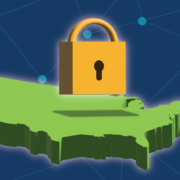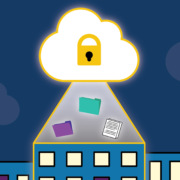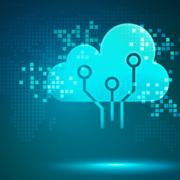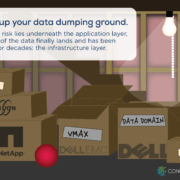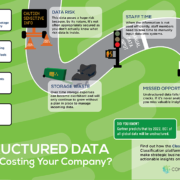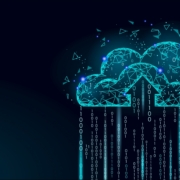Privacy laws in the United States are not tied to a central set of rules and regulations like the GDPR in the European Union. Instead, both federal and state legislatures have passed privacy laws that target specific fields of privacy concerns. This has led to many rules and regulations that compliance teams must parse to determine what must be followed for their organization, especially as states legislate to fill the data protection gaps left behind by federal law.
In the digital age, the infrastructure of data, its costs, and its means of security have evolved over time. Organizations have always sought cutting-edge tools and solutions for their digital needs, which has led to the emergence of cloud services as a more scalable and secure option over on-prem services.
Early on, infrastructure for all data required the investment of all-prem services, short for on-premises. Data centers, their applications, and network solutions required hardware on company grounds. This setup also required server upkeep and security measures on-location to keep all data maintained, available, and uncompromised.
A cloud migration strategy is an organization’s plan of action for successfully moving data, applications, and processes onto a cloud platform. Such strategies become essential due to the requirements, data security, and costs that can differ from one dataset to another. Those differences require a variety of strategies in turn.
Cloud migration strategies apply whether an organization moves from local infrastructure to cloud infrastructure, moves from one cloud service to another, or sets up a hybrid cloud to leverage both local and cloud infrastructures.
When it comes to unstructured data in an organization, sensitive data is the most important type of data to identify. Sensitive data falls into several classifications, but broadly refers to data that must be protected from unauthorized access to prevent harm to businesses and individuals alike. These classifications include personal information, private information, health information, and high-risk data, among others.
The cloud-first priority shift is one of the biggest transformative changes impacting businesses as a result of Covid-19. According to Gartner, by 2024 more than 45% of IT spending on system infrastructure, infrastructure software, application software and business process outsourcing will shift from traditional solutions to cloud. And by 2025, 85% of large enterprises will have a cloud-first principle.
Information and data governance is one of the hottest and most debated topics any organization can discuss in today’s world. Every organization, big or small, knows that it has to protect its own data, but with regulations now being enforced through CCPA, GDPR, HIPAA, etc. the playing field has changed drastically. No business can afford to look the other way any longer. You know your business must adhere to these regulations and clean up its data to avoid unnecessary risk and legal action, but how?!?
Unstructured data, as you might guess, is any type of data that can’t be easily organized into your typical database or spreadsheet. These are the pieces of content that you come across every day. They exist in emails and social media. You might run across this information in webinars or conference calls. Your call centers get unstructured data in the form of verbal communications.
Cloud computing is one of the top three game-changing technologies, meaning many organizations regardless of size, industry, and technology will begin or increase their usage of the cloud. With that being said, according to Gartner’s most recent report, “through 2024, 80% of companies unaware of mistakes made by organizations in their cloud adoption will overspend in cloud by 20% to 50%.”
While much of the corporate workforce can easily work from home as we weather the COVID-19 pandemic, IT teams struggle to maintain the health of both physical technical environments and, more importantly, their team members. It’s a delicate balance, ensuring the safety of employees while doing the utmost to ensure business-critical systems are up and running. While there is no magic algorithm to employ when it comes to the necessary reallocation of IT resources within our quickly-pivoting enterprises, remote monitoring services may ease the burden a bit by taking over some of IT’s day-to-day operations.
With data generation constantly increasing across the business and social worlds, artificial intelligence (AI) and machine learning (ML) are working to enhance our everyday tasks, both personal and professional, one step at a time. There are a number of themes emerging within the world that CIOs should consider for future planning:

